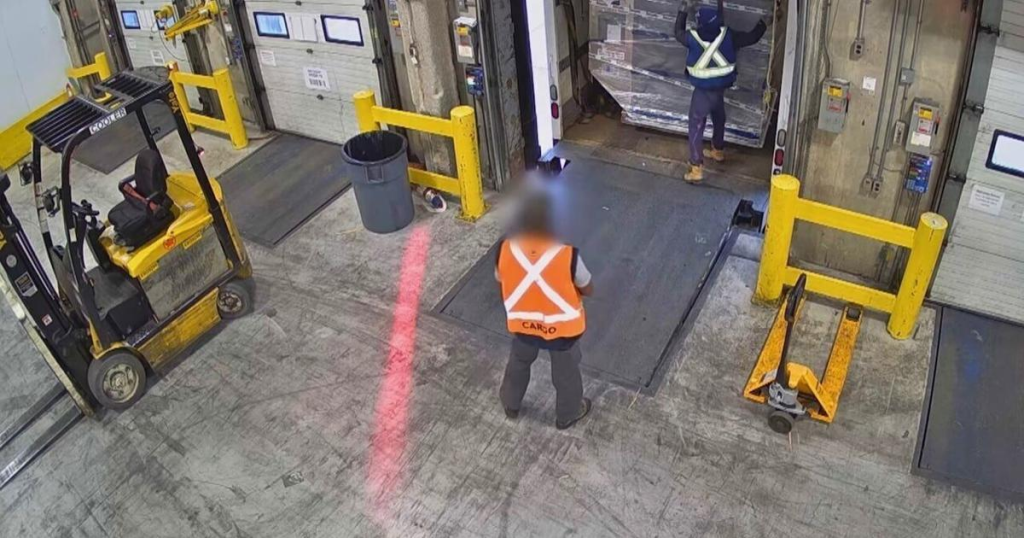Around this time in 2022, Logistics Insider reported about a real-life heist that could easily be mistaken for a Hollywood blockbuster. From a freight yard in Manzanillo, Mexico to an airport in Toronto, Canada, we bring to you another such incident that can put scriptwriters to shame.
On April 17, 2023, Toronto Pearson International Airport in Canada witnessed a grand theft as gold and cash worth over 22 million Canadian dollars were stolen. A container of gold bars and foreign currency was offloaded from an inbound aircraft from Switzerland and transferred to an Air Canada holding facility. There, the carrier’s staff were tricked by a forged shipping document into loading it onto a getaway truck. The suspects used a completed bill for a seafood pickup to forge paperwork, deceiving a warehouse attendant and making off with a pallet full of gold bars.
The heist was executed with such precision that it took nearly a year for the authorities to unravel the plot. Until now, 9 people – including a former Air Canada manager and a jewelry store owner – have been charged concerning the heist. According to the lead investigator, the theft was the single-largest gold heist in Canadian history and left law enforcement agencies and the global gold market in a state of high alert.
At present, the lead investigator on the case believes that the stolen gold has likely made its way to markets in Dubai and India, where even gold with serial numbers on it is honored and melted down.
The daring theft of over 6,500 gold bars, described by some as ‘Netflix-worthy material’, underscores the immense risks and complexities involved in the transportation of precious cargo, including logistical challenges and sophisticated criminal activities.


On one hand, the involvement of at least two former Air Canada employees in the heist underscores the danger posed by insiders who have intimate knowledge of security protocols and operations. On the other, the easy availability of forged paperwork points to the vulnerabilities of administrative processes. The ability to move stolen gold to international markets and, therefore, a legitimate supply chain, complicates recovery efforts and enforcement.
The Greater Toronto Airport Authority (GTAA) clarified that the Air Canada facility, where the heist took place, was located outside the airport’s primary security line. This positioning raised concerns about the adequacy of security measures in areas not directly under the airport’s stringent security protocols.
To safeguard against such high-stakes thefts, it becomes imperative for those engaged in the transportation of precious cargo to adopt robust security measures and leverage advanced technologies.
For instance, to counter potential insider threats, rigorous background checks, continuous monitoring of employees, and safety training, especially for those with access to sensitive areas, can be of help. Simultaneously, utilizing GPS tracking and real-time monitoring systems can provide better visibility and control over cargo movements, allowing for immediate response in case of discrepancies.
When it comes to technology, an added step towards safety can be the use of blockchain to track precious metals and ensure transparency and traceability, making it difficult for stolen gold to be laundered through legitimate markets.
Supply chain companies must ensure that security protocols are stringent and uniformly applied across all facilities, including those outside primary security perimeters. Investing in advanced security technologies, such as biometric access controls and real-time surveillance systems can enhance the security of valuable shipments.
Lastly, enhancing documentation protocols and verification processes can prevent forgeries and unauthorized access to cargo. Clear and detailed documentation of cargo value and special requirements on waybills can help avoid disputes and ensure that all parties are aware of the shipment’s importance.
Among those arrested were Parmpal Sidhu, who was working at the Air Canada Cargo terminal during the heist; Archit Grover (a longtime friend of Sidhu), and Amit Jalota (Grover’s cousin). The heist not only involved meticulous planning but also highlighted the ease with which criminals can exploit personal relationships and insider knowledge to execute their plans.

After a year, the law enforcement authorities have been able to recover 90,000 Canadian Dollars out of the 22 Million, and authorities still strive to trace the remaining gold bars. The involvement of international markets in Dubai and India poses a significant challenge, as these markets are known for their capacity to absorb gold with little scrutiny regarding the origin of precious metals. For instance, a small amount of the gold stolen was probably melted down in the basement of a Mississauga jewelry store immediately after the heist.
In the world of precious cargo transportation, the mantra must be clear: Trust no one, verify everything, and always expect the unexpected.

